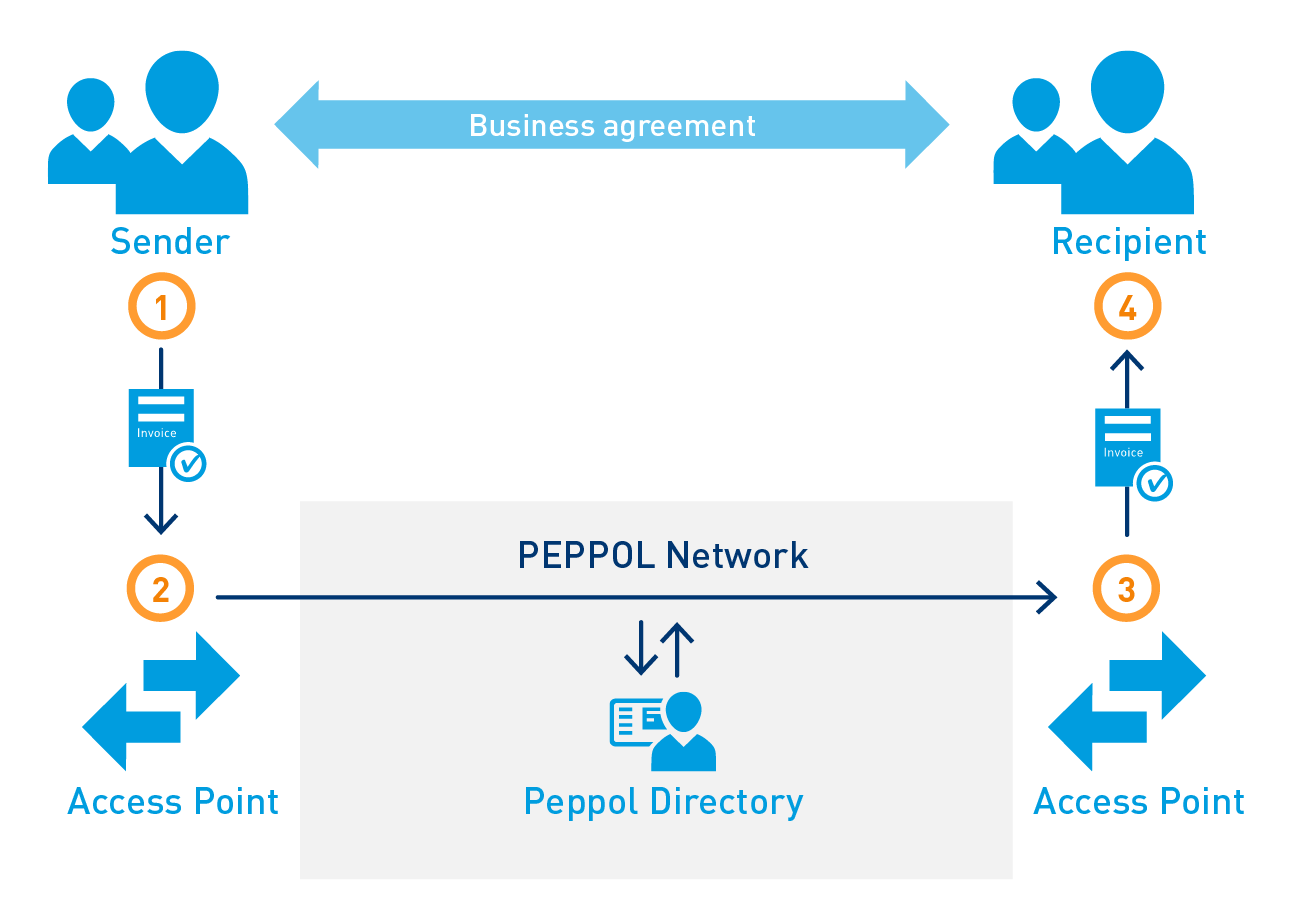BLOG
PEPPOL – What is it, who benefits, can you use it?
The abbreviation PEPPOL stands for “Pan-European Public Procurement OnLine”. An electronic and Europe-wide network on the subject of public tenders for the exchange of digital documents, especially electronic invoices. So far, so good – but who is PEPPOL aimed at? What is it? Can it already be used and who benefits from it?
Why PEPPOL at all?
Through PEPPOL, the political will to provide access to public tenders within the European Union, especially for small and medium-sized enterprises, so-called SMEs, has been demonstrated. Knowing that these SMEs do not usually have branches and sites spread across Europe, PEPPOL aims to pave the way for digital, pan-European business transactions and at the same time strengthen European competition.
Objectives, target groups, actions of PEPPOL?
As already mentioned, the central task of the Pan-European Public Procurement OnLine project is to provide the technical infrastructure as well as EU-wide processes and document formats. This should enable European companies to participate in public tenders. For this purpose, both public clients and companies should be able to exchange digital messages. These electronic messages are by no means just e-invoices. Other documents for business exchange are also envisaged, such as catalogues, orders and documentation on suppliers. PEPPOL will not limit itself to so-called e-invoicing, but will map the entire procurement process.
Key facts about PEPPOL
The project was launched in 2008 under the auspices of the European Union, following a ministerial conference in Manchester which set out the objectives for the development of a cross-border e-supported procurement system targeting Europe. Since 2012 the organisation OpenPEPPOL has taken the lead.
The main focus of the PEPPOL project is the development of open, comprehensible standards. However, not free-floating and out of nowhere, but with the inclusion of already existing, national electronic solutions around the topic of public tenders. PEPPOL is concerned with the transport route of electronic invoices and documents, but not with electronic invoice formats – nevertheless, the EN16931 standard was created in another European context. This standard defines the core elements of the semantic data model of a digital invoice in the syntaxes UBL 2.1 (Universal Business Language) and CII D16B. The national implementations of the electronic invoice format are based on EN16931. In this respect, PEPPOL and electronic invoice formats such as XRechnung, Fatura PA, Facture X and ZUGFeRD 2.0 belong together and breathe European spirit.
The eDelivery Network – How does PEPPOL work?
In order to achieve the goals just described, the project provides a so-called PEPPOL eDelivery network throughout Europe. Based on the standards just outlined, this network represents a 4-corner model.
The PEPPOL Four Corner Model
The easiest way to illustrate the eDelivery network is to use electronic invoicing. Invoicing parties and invoice recipients are given access to the PEPPOL infrastructure (eDelivery Network) via an access point (AP). APs are usually private sector organisations. By connecting to this infrastructure, communication participants gain access to all other registered network participants. There is no need to set up and negotiate bilateral connections for message exchange. This is handled by the eDelivery Network of PEPPOL.

After registering with an access point, the registered user receives a unique PEPPOL ID to log on to the eDelivery Network. This applies to each participant. No matter which access point you use to dial in, you will reach all other participants and vice versa. There are no roaming charges.
Who already benefits from PEPPOL?
In a nutshell: Companies that are already working on the idea of electronic procurement or are already using it are in a position to exploit its strong advantages – initially in the context of public tenders. Since PEPPOL is a network spanning the EU nations, after registering with PEPPOL you will be able to enter into a potential exchange with all other members participating in the PEPPOL network.
What do I have to do to participate in PEPPOL?
If you are already using XRechnung, you will in all probability be able to use PEPPOL in addition to other channels of the Central Invoice Receipt Platform of the Federal Government (ZRE). This access channel is currently being planned, see the following federal government information.
Registration with a PEPPOL access point
As shown above, both the sender and the receiver connect to the PEPPOL eDelivery network via a PEPPOL access point. To do this, you must register your company with a PEPPOL access point. An overview of existing access point providers can be found on the PEPPOL project website.
Pan-European Public Procurement OnLine – the future?
PEPPOL is certainly one of the pioneering projects in the context of electronic exchange of data and documents in the B2B sector. Open standards and the inclusion of various established formats – from XRechnung to ZUGFeRD and many others – allow one to look to the future with confidence.